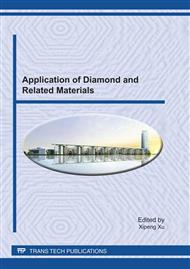p.269
p.274
p.278
p.284
p.289
p.294
p.300
p.305
p.311
Effects of Cutting Parameters on the Surface Roughness of Ti6Al4V Titanium Alloys in Side Milling
Abstract:
Side milling Ti6Al4V titanium alloys with fine grain carbide cutters is carried out. The influences of milling parameters on surface roughness are investigated and also discussed with average cutting thickness, material removal rate and vibration. The results reveal that the surface roughness increases with the increase of average cutting thickness and is primarily governed by the radial cutting depth.
Info:
Periodical:
Pages:
289-293
Citation:
Online since:
June 2011
Authors:
Price:
Сopyright:
© 2011 Trans Tech Publications Ltd. All Rights Reserved
Share:
Citation:


